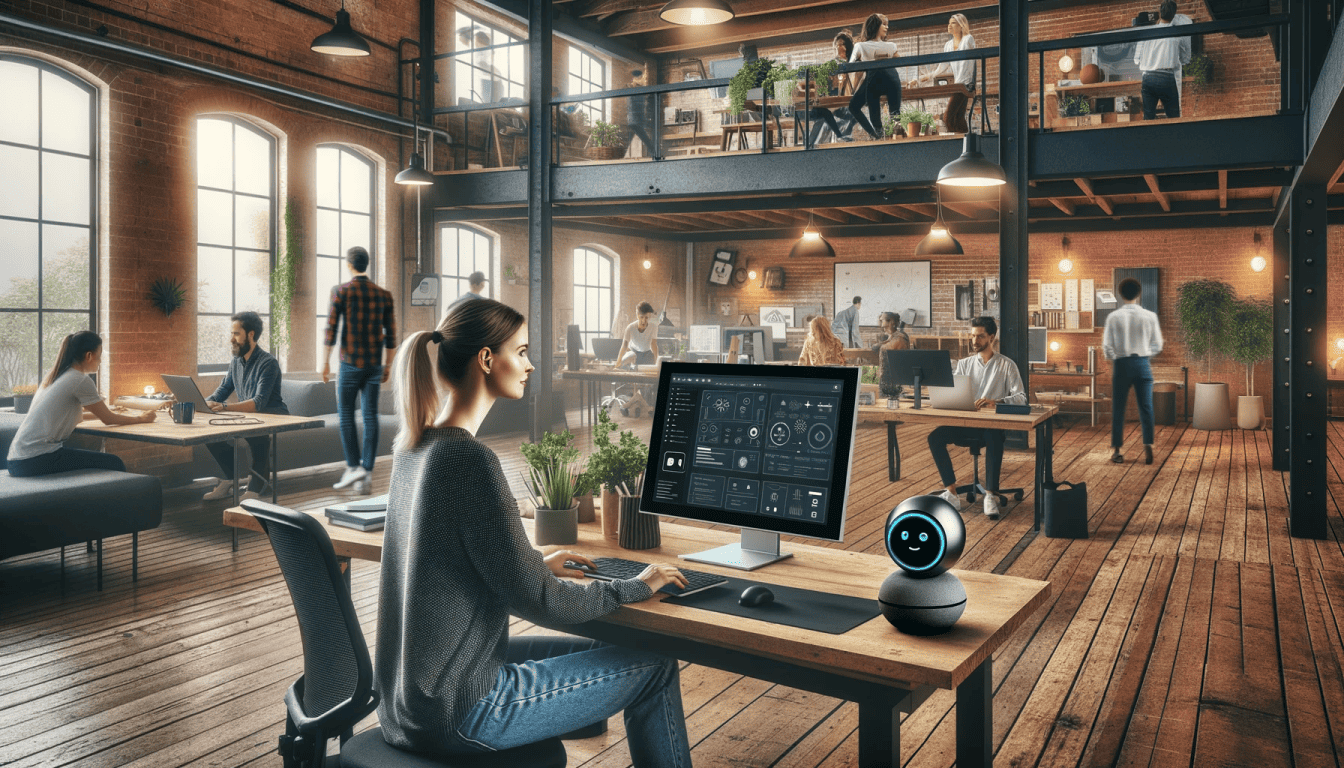How to use AI in B2B user research
19th December 2023 •
19th December 2023 •

This year, the adoption of Generative AI as a more mainstream tool has altered my workflow and sped up my user research processes with our clients.
The UX community, known for its vivid minds and passion for innovation, is of course enthusiastically embracing modern technologies, while keeping users at the core of our work. A recent 2023 study conducted by the NN group, surveyed 841 UX professionals about their use of AI. The findings were revealing: 92% of respondents had used at least one generative AI tool, and among those, 63% used them several times per week, if not daily. The most common application being text-content generation and editing, preparing desk-research summaries and specific UX-research documents.
Perhaps it would be helpful if I told you about phases involved in UX Research and how I, as a UX Researcher, reorganised my process by leveraging AI tools.
In terms of UX, Business to Business (B2B) projects traditionally differ from Business to Consumer (B2C) by having more complex buyer journeys, that often require a deep dive into unfamiliar areas, and particularly those involving intricate B2B problems. As a UX Researcher at Torpedo, some of these activities include:
As you might expect I use different research methodologies depending on the client’s brief, problem statement, time allocated, and resources available.
In B2B it’s even more crucial to understand who the target users are and how they interact with and feel about the product or services. As McKinsey states:
“A strategy focused on improving the experience of existing customers can deliver breakthrough growth for incumbent companies—often more than double that of their industry peers. Companies start by defining their desired financial outcome and then prioritize the customer experience improvements that will deliver that outcome. Leaders in companies executing experience-led growth strategies take care to understand customer pain points standing in the way of growth—such as complicated buying processes, tracking and delivery issues that hinder recurring purchases, or a lack of integration between channels. “
Not very long ago I would start my research projects with a traditional, linear approach. I would open a document, summarise the task, list sources, and define key areas to investigate. Before the kick-off call with a new client, I would ask our Client Services team for a briefing. Then if time allowed, I’d use Google to learn more about the industry, consumer, and competitors. This preparatory phase is essential, setting the stage for more interactive aspects of user research that follow. Interacting with B2B clients requires precision, understanding, and trust, so the more I know about the client’s business beforehand, the stronger relationship I can build starting from the first meeting.

Today, the process has been transformed. I open ChatGPT or Bard AI, asking it to act as my user research partner, thereby giving me an extra pair of hands and speeding up my desk research. By prompting ChatGPT to assume a specific persona, I provide a specific context for the conversation. This can help narrow down the scope of the discussion and elicit responses that are relevant to the chosen identity. I can filter out irrelevant responses. When I need real data, I simply ask for a source, which it provides approximately half of the time. I filter responses based on my User Researcher experience, not heavily relying on AI. It is more a reflection exercise for me, where ChatGPT acts as the partner, whose point of view I can either agree with or disagree according to my knowledge and experience. Working this way, I found myself engaging in more meaningful conversations with clients, since I could be better prepared for even last-minute meetings.
With my lovely AI research assistant onboard, AI can also help out on some of the more laborious tasks, or where I need a variety of ideas to test. Here are some examples of additional tactical research activities that AI assists me with:
I now have additional time to focus on cross-functional team collaboration and UX strategy. Working closely with other Torpedo departments, such as marketing, digital, development, and client stakeholders, to integrate UX strategies into the broader product development process.

In May 2023,another survey of just over a 1000 UX professionals was conducted to look at how they use AI in research. The findings report that:
“The #1 concern is the potential for inaccurate and/or incomplete analyses mentioned by 29.7% of UX professionals. After inaccuracy, the biggest concerns were a lack of data privacy (19.7%) and the potential for introducing bias into study findings (14.1%).”
While AI does indeed help me in my role, I want to highlight a few crucial limitations:

Perhaps if I were to ask my new AI research assistant to conclude it would say, we certainly need to embrace innovative technology and learn how to use it effectively. What it might fail to say is it’s important to engage in dialogue with AI, thinking logically, mastering prompts, and seeking help. We need to check and validate the data it produces.
Previously, research was all about going into the field and observing how users interact with the product in person. Now, we conduct more remote research because technology facilitates this. We can use AI to streamline manual processes but cannot fully replicate human connections. AI cannot translate human emotions. It misses verbal cues, sarcasm, and irony. We design for real, complex user needs that machines cannot truly understand…yet! We may use AI data to inform and guide us, but we must always validate with real people to truly humanise business complexity and deliver success for our clients.
